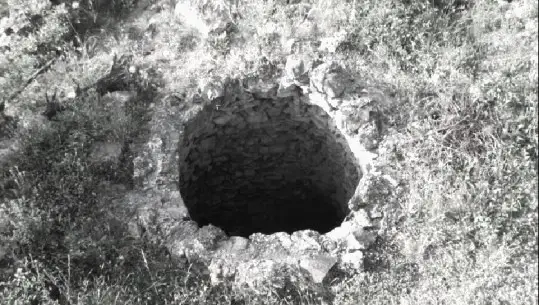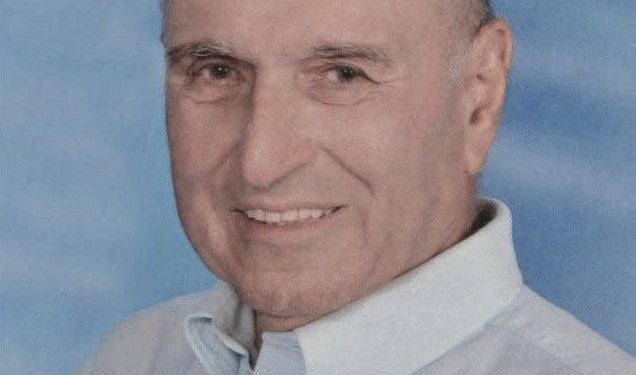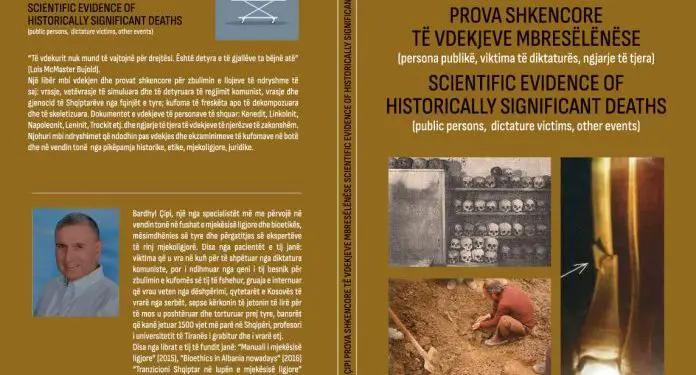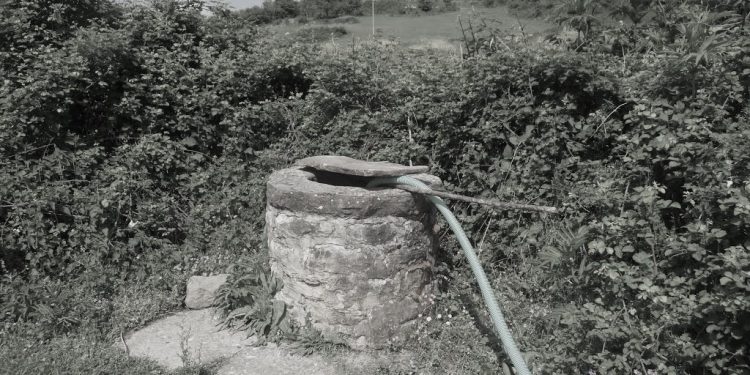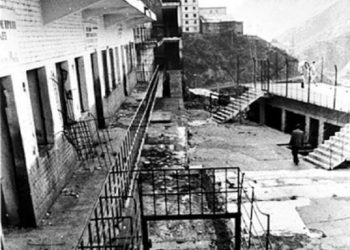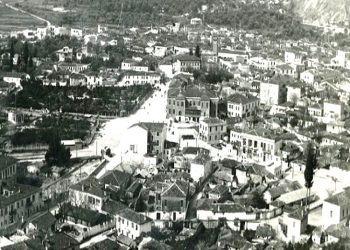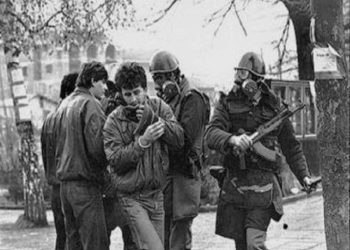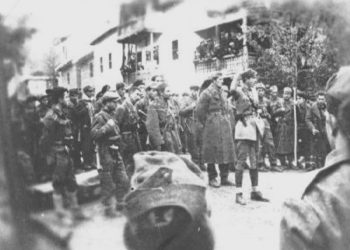By Prof. Dr. Bardhyl Çipi
Part fourteen
SCIENTIFIC EVIDENCE OF STRIKING DEATHS
(Public figures, victims of the dictatorship, other events)
Memorie.al / Bardhyl Çipi, one of the most experienced specialists in our country in the field of Forensic Medicine and Bioethics, their teaching, and the training of young forensic experts. Some of his patients include: victims who were killed on the border while trying to escape the communist dictatorship, but whose hidden corpse was discovered with the help of his loyal dog; the interned woman who committed suicide out of despair; Kosovan citizens killed by Serbs because they sought to live free, not to be humiliated and tortured by them; residents who lived 1500 years ago in Albania; the University of Tirana professor who was robbed and murdered; etc. A book on death and the scientific evidence for discovering its different types: murder, suicide, cases stimulated and forced by the communist regime, murders and genocides against Albanians by their neighbors, fresh or decomposed and skeletonized corpses. Documents of the deaths of prominent figures: Kennedy, Lincoln, Napoleon, Lenin, Trotsky, etc., and other events involving the deaths of ordinary people. Knowledge about post-mortem changes and the examination of corpses in the world and in our country, from a historical, ethical, forensic, and legal perspective. Some of his recent books are: “Manuali i Mjekësisë Ligjore” (Forensic Medicine Manual) (2015), “Bioethics in Albania nowadays” (2016), “Tranzicioni shqiptar në lupën e mjekësisë ligjore” (The Albanian Transition through the Lens of Forensic Medicine) (2018), “Mjekësia Ligjore Kriminalistika” (Forensic Medicine Criminalistics) (2020).
Anthology of Forensic Examinations of Corpses from Various Incidents in Our Country
Case of Simulated Drowning in a Well in 1962
This is one of the many forensic examinations conducted by Dr. Spiro Çipi over 60 years ago. Its presentation is included in this book; although it is not a genuine death case, it represents a special instance of simulated drowning in a well.
In this case, a person accused of attempted murder of his wife was found guilty by the court and sentenced to 10 years of imprisonment.
The Incident
The incident had occurred sometime before the trial, around 10:00 AM on a rainy day, when the wife of the accused was found inside the well of their home in the city R., holding onto the well’s walls. She was pulled out with the help of her husband, mother-in-law, and father-in-law.
However, she immediately accused her husband of forcibly throwing her into the well, even pushing her in head-first with the intent to drown her. As a motive for such an act, she claimed it was due to the quarrels she had with her husband because he didn’t love her and wanted him to agree to a separation.
In fact, investigations revealed that the defendant, after his marriage to the accuser, had taken a second wife without dissolving the first marriage, and had children with both women.
For the past five years, he had no relationship with the second wife and was living with his first wife in his parents’ house. Recently, due to constant quarrels, he had been staying alone in one room of the house, separate from his wife and children.
Despite these circumstances, which the defendant himself generally admitted, he categorically denied having thrown his wife into the well from the beginning, stating that she entered it herself and that, on the contrary, he had helped pull her out of the well.
Examination of the Injured Party
The forensic examination of the injured party immediately after the incident found that she mainly had only a few abrasions on the lateral part of the right forearm, below the elbow, on the right buttock, below the anterior superior iliac spine (the most prominent lateral part of the pelvic bone), and on the right calf below the knee.
Inspection of the Well
The inspection of the well related to this incident showed that it was lined with stone walls, covered by a large layer of moss. The well’s opening, with a diameter of 0.8 m, has a height of 0.8 m from the ground; the distance from the well’s opening to the water surface is 3 m; the water depth is 3.45 m; the complete depth of the well is 6.45 m; the diameter at the bottom of the well is 0.60 – 0.65 m, thus narrower than the opening.
Also, on the inner face of the well walls near the opening, there were two metal hooks. The inspection of the well walls showed damage to the moss at a distance of 1.12 m below the opening, as well as damage in 4 other places, at distances from 1 – 1.6 m from the well opening.
There was no other damage to the moss on the well walls above or below the water, but small pieces of this moss were seen floating on the well water.
Following the investigations, the accused person was indicted by the prosecutor’s office and subsequently found guilty and convicted by the court.
However, following his appeal, the case was reviewed by the Supreme Court, which requested a re-examination of the matter, which was carried out by us (Dr. Spiro Çipi).
Forensic, Criminological, Psychological, and Psychiatric Analysis
A detailed forensic and criminological analysis of all the data in this case, in relation to the attempted murder version raised by the defendant’s wife, suggests that she was not getting along with her husband at all, and considering the seriousness of their long-standing quarrels, it could be believed a priori that the husband attempted to eliminate his wife by throwing her into the well.
However, for this version, the circumstances of the incident are not completely convincing for these reasons:
-From a psychological standpoint, it can be said that the person suspected of such a serious act, no matter how physically and morally degraded he may have been, if he had decided to act, would have had the opportunity to prepare better for his goal and not risk so much by attacking his wife in the middle of the day, in an inner city neighborhood, in his own house, where his father, mother, and a quite grown-up daughter were present at the time. Conversely, these conditions would better fit the alternative version, invoked by the defendant, which makes it more plausible that the injured party entered the well herself. In such a case, it is not difficult to find the reasons the injured party might have had for such a sensational simulation.
-From a psychological perspective, in the attack version, the usual reactions of a victim, no matter how physically weaker she might have been compared to the aggressor, were not confirmed. Contrary to what generally happens in practice, the injured party, as an alleged victim of an attack, should have offered some resistance, by loudly struggling or at least shouting for help, and not simply allowing herself to be easily thrown into the well, without any struggle, as she herself claims. Then, after emerging above the water, she allegedly shouted from inside the well, but again, not so much to plead for immediate rescue, but rather to consciously and calmly instruct them to notify the neighbors so they could see her in that state!
The dynamic aspect of the judged event, according to the injured party’s version, also leaves room for doubt when considering these observations:
-In a well with an opening width of 80 cm and a bottom of only 60-65 cm, where the water depth is 2-3 meters, if an adult person, even a woman of a not very developed physique, with a body length of 60 m (like the accuser), were thrown into the well head-first, she would not have been able to turn around in the well’s limited space to emerge head above water, as the injured party claims. This categorical opinion is based on the views of swimming masters specifically consulted, as well as the hydrodynamic expert for this case.
-For the aforementioned reasons, the possibility of the injured party being thrown into the well head-first is excluded. However, even if a turn of the body in this well after such a fall were momentarily considered possible, the victim would most likely have suffered shock and more severe bodily injuries, with different locations than the lesions found on this injured party.
-Precisely the characteristics of these injuries-based on their location on one side of the body (right forearm, right buttock, and right calf)-suggest a very high possibility that such injuries were caused by hard objects, such as the stone walls of the well, coming into contact with a body directed from top to bottom, with the head up and feet down.
Moving now mainly into the forensic and criminological aspects of the case, even greater difficulties arise in making the injured party’s version credible: not only for the original head-first variant but also for the second feet-first variant.
The highly developed moss covering the well walls was found to be scraped and trampled in several places on the sides of the well, at varying heights, from one meter up to 1.60 m from the well opening. In the other parts of the walls, further down to the water surface-i.e., from the distance of 1.60 m from the opening down to the distance of 3 m (which was the distance from the opening to the water surface)-no analogous damage to the moss or changes of any other kind were observed.
This raises the question: If the injured party had been immersed in the water and had managed, one way or another, to emerge above the water without losing consciousness and being able to hold onto the well walls, wouldn’t she have caused damage with her hands and especially her feet to the sides of the stone walls, even in the lower parts of their surfaces? Damage similar to, if not more pronounced than, the scraping and trampling of the moss seen on the upper parts of these walls? The answer is obvious.
The lesions the injured party sustained, as mentioned above, were notably few in number and slight, if considered the result of a genuine fall into an ordinary well. In such cases, it can be stated, without the need for complicated mathematical calculations, that during the fall of an average-weight person into a well from a considerable height, the body’s impact against the well walls-which happens almost always inevitably-not counting the other possible impact at the well’s bottom, impacts of this nature usually cause very significant shock and numerous and quite severe lesions.
Continuing in this direction with reasoning by elimination, the conclusion can be reached that the injured party may not have fallen into the water inside the well at all. But then, if such a judgment is accepted, how can the facts be explained that the injured party was seen inside the well, holding onto the walls, and that her clothes were found wet, etc.?
Regarding the wetness of the clothes, it can be explained by the bad, rainy weather at the time of the incident. In fact, the most probable version, based on the slight bodily injuries and the characteristics of the marks on the well wall moss, is that: the injured party may have partially entered the well herself, carefully lowering her body alongside the walls, holding onto the well opening or the metal hooks with her hands, and using her feet below. This caused the scraping and trampling on the moss of the protruding stones on the walls, as was actually confirmed, no lowers than her feet could reach when her body was positioned in this way, not far from the well opening.
By thus creating a false alarming situation, the author, once secure inside the well and seen by her husband, then only began to shout. Remaining unshaken by the slight lesions suffered during her “descent” into the well, she was able to wait somewhat, refusing the help offered for a time, in the hope that the alerted neighbors would see her in that state.
If such a judgment were accepted, there is no need to insist further to reach the highly probable opinion that the injured party, for her known reasons, fabricated the entire event herself, with a predetermined goal.
In conclusion of the forensic and criminological review of this case, it was concluded that this citizen was slightly injured by her contact with the well walls during her descent there, and not by falling into the well head or feet first.
Therefore, from all the data and arguments presented above regarding this incident, the opinion can be given for the very high probability of the entire incident being fabricated by the injured party herself, with a predetermined purpose.
After the Court reviewed this act of forensic and criminological expertise, it declared citizen S.K. innocent and convicted his wife for false reporting. Memorie.al




